Related Research Articles
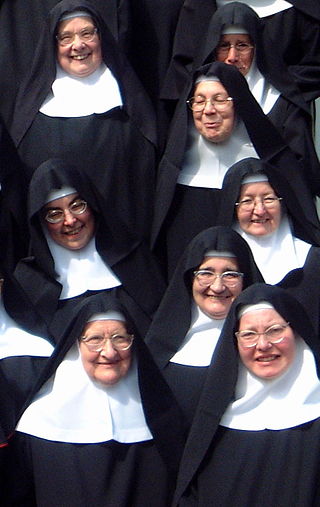
A nun is a woman who vows to dedicate her life to religion, typically living under vows of poverty, chastity, and obedience in the enclosure of a monastery or convent. The term is often used interchangeably with religious sisters who do take simple vows but live an active vocation of prayer and charitable work.

Reginald Pole was an English cardinal of the Catholic Church and the last Catholic archbishop of Canterbury, holding the office from 1556 to 1558, during the Counter-Reformation.
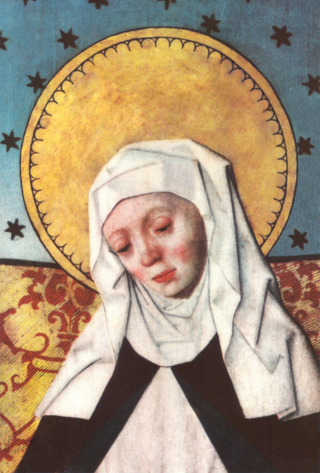
Bridget of Sweden, OSsS born as Birgitta Birgersdotter, also Birgitta of Vadstena, or Saint Birgitta, was a mystic and a saint, and she was also the founder of the Bridgettines nuns and monks after the death of her husband of twenty years. Outside Sweden, she was also known as the Princess of Nericia and she was the mother of Catherine of Vadstena.

Peter Martyr Vermigli was an Italian-born Reformed theologian. His early work as a reformer in Catholic Italy and his decision to flee for Protestant northern Europe influenced many other Italians to convert and flee as well. In England, he influenced the Edwardian Reformation, including the Eucharistic service of the 1552 Book of Common Prayer. He was considered an authority on the Eucharist among the Reformed churches, and engaged in controversies on the subject by writing treatises. Vermigli's Loci Communes, a compilation of excerpts from his biblical commentaries organised by the topics of systematic theology, became a standard Reformed theological textbook.

Nicholas Ridley was an English Bishop of London. Ridley was one of the Oxford Martyrs burned at the stake during the Marian Persecutions, for his teachings and his support of Lady Jane Grey. He is remembered with a commemoration in the calendar of saints in some parts of the Anglican Communion on 16 October.

John Roy Hooper was an English churchman, Anglican Bishop of Gloucester, later of Worcester and Gloucester, a Protestant reformer and a Protestant martyr. A proponent of the English Reformation, he was executed for heresy by burning during the reign of Queen Mary I.
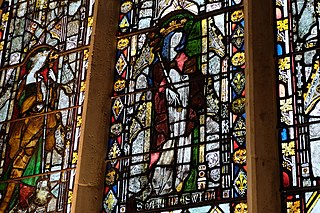
Frithuswith, commonly Frideswide, was an English princess and abbess. She is credited as the foundress of a monastery later incorporated into Christ Church, Oxford. She was the daughter of a sub-king of a Mercia named Dida of Eynsham whose lands occupied western Oxfordshire and the upper reaches of the River Thames.

Richard Cox was an English clergyman, who was Dean of Westminster and Bishop of Ely.
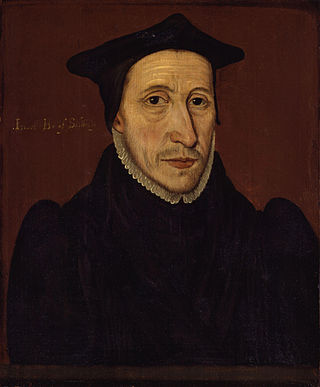
John Jewel of Devon, England was Bishop of Salisbury from 1559 to 1571.

Lady Elizabeth de Montfort, Baroness Montagu was an English noblewoman.
Women as theological figures have played a significant role in the development of various religions and religious hierarchies.

Christ Church Cathedral is the cathedral of the Anglican diocese of Oxford, which consists of the counties of Oxfordshire, Buckinghamshire and Berkshire. It is also the chapel of Christ Church, a college of the University of Oxford. This dual role as cathedral and college chapel is unique in the Church of England.
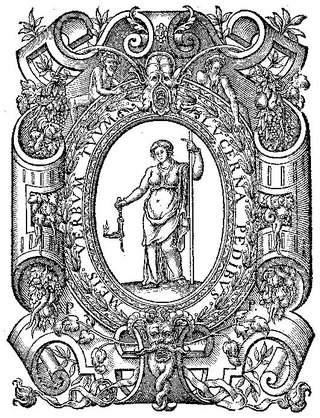
Pietro Perna was an Italian printer, the leading printer of Late Renaissance Basel, the Erasmian crossroads between Italian Renaissance humanism and the Protestant Reformation. His books promoted the Italian heretical thinkers at the origins of Socinianism and the theory of Tolerance. He was a major publisher of Protestant historians like Flacius Illyricus and David Chytraeus and promoted the ars historica treatises of the period, notably the 18 authores de historia in Artis Historicae Penus (1579).
Sarah Rosamund Irvine Foot is an English Anglican priest and early medieval historian, currently serving as Regius Professor of Ecclesiastical History at the University of Oxford. In July 2023 she will become the first woman to serve as Dean of Christ Church, Oxford.
Thomas Sampson was an English Puritan theologian. A Marian exile, he was one of the Geneva Bible translators. On his return to England, he had trouble with conformity to the Anglican practices. With Laurence Humphrey, he played a leading part in the vestments controversy, a division along religious party lines in the early years of the reign of Elizabeth I of England.
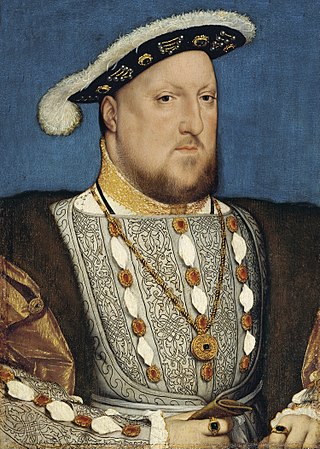
The English Reformation took place in 16th-century England when the Church of England broke away from the authority of the pope and the Catholic Church. These events were part of the wider European Reformation, a religious and political movement that affected the practice of Christianity in Western and Central Europe.

Women in Church history have played a variety of roles in the life of Christianity - notably as contemplatives, health care givers, educationalists and missionaries. Until recent times, women were generally excluded from episcopal and clerical positions within the certain Christian churches; however, great numbers of women have been influential in the life of the church, from contemporaries of Jesus to subsequent saints, theologians, doctors of the church, missionaries, abbesses, nuns, mystics, founders of religious institutes, military leaders, monarchs and martyrs.
Francesco Stancaro was an Italian Catholic priest, theologian, Protestant convert, and Protestant reformer who became professor of Hebrew at the University of Königsberg.
John London, DCL was Warden of New College, Oxford, and a prominent figure in the Dissolution of the Monasteries during the reign of Henry VIII of England.
Catherine Holland was an English Roman Catholic convert, a nun, and an autobiographer.
References
- 1 2 3 4 Kesselring, K. J. (20 July 2021). "The case of Catherine Dammartin: Friends, fellows, and the survival of celibacy in England's protestant universities". Renaissance and Reformation. 44 (1): 87–108. doi:10.33137/rr.v44i1.37043.
- 1 2 3
 This article incorporates text from a publication now in the public domain : Lee, Sidney, ed. (1899). "Vermigli, Pietro Martire". Dictionary of National Biography . Vol. 58. London: Smith, Elder & Co.
This article incorporates text from a publication now in the public domain : Lee, Sidney, ed. (1899). "Vermigli, Pietro Martire". Dictionary of National Biography . Vol. 58. London: Smith, Elder & Co. - ↑ "Vermigli, Pietro Martire [Peter Martyr] (1499–1562)". Oxford Dictionary of National Biography (online ed.). Oxford University Press. doi:10.1093/ref:odnb/28225.(Subscription or UK public library membership required.)
- ↑ Calfhill, James (1561). De Katherinæ nuper vxoris doctissimi viri D. Petri Martyris vermilij Florentini, regij theologiæ apud Oxonienses tempore Edwardi sexti professoris, Cardinalis Poli mandato, regnante Maria, effossæ exhumatione, ac eiusdem ad honestam sepulturam sub Elisabetha regina restitutione, studiosorum quorundam tam Oxoniensium quàm aliorum carmina cum præfatione quadam totam rei gestæ seriem depingente. London: John Day.